Posted February 29, 2024 by Tiffany Lee
In case you missed these stories highlighting research and creative activity at the University of Nebraska-Lincoln, the Office of Research and Economic Development’s communications team has compiled a roundup of some recent top stories from research.unl.edu and other sources.
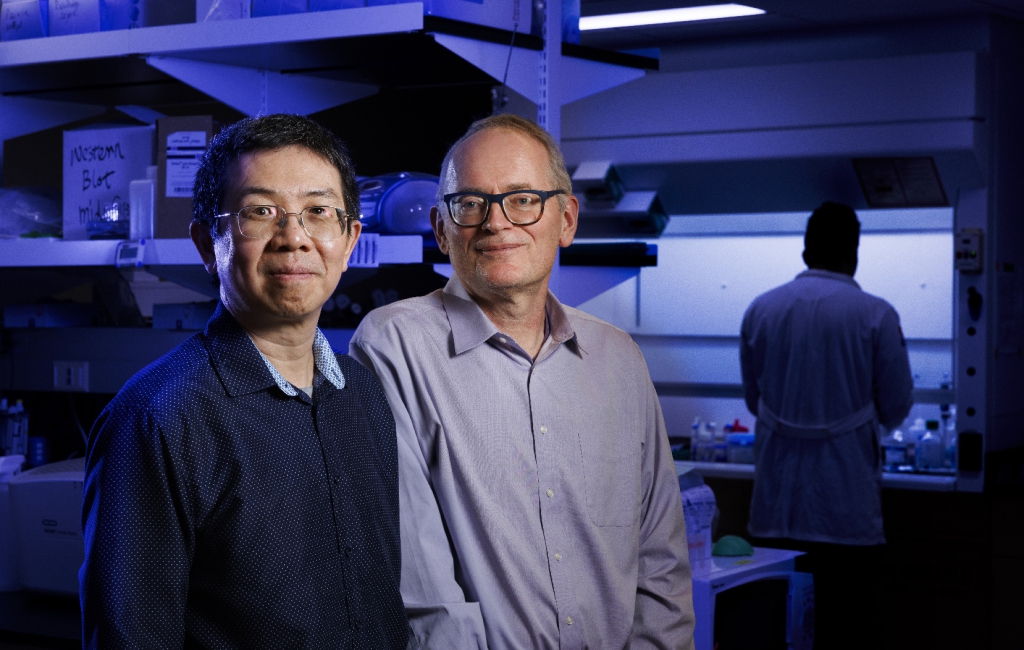
Husker team wins prize in contest to treat disease through gene editing
Who: Janos Zempleni, Willa Cather Professor of Molecular Nutrition; Jiantao Guo, professor of chemistry
What: The research duo was named a first-round winner in a National Institutes of Health competition aimed at generating solutions for delivering genome-editing technology to the cells of people with diseases. Zempleni and Guo will advance development of universal milk exosomes – natural nanoparticles found in milk – capable of transporting gene editors to any location in the body. They are using bioorthogonal chemistry techniques to attach three specialized peptides to the membrane of each exosome, which work in concert to direct the cargo to certain tissues, thwart macrophages and enhance survivability. Their method of connecting the peptides to the exosome is novel for its stability and uniformity.
“With the flexibility of our technology, we can, without extra cost, provide a platform to treat everything, from common diseases like brain cancer, to very rare gene mutations that maybe affect only 500 people in the United States,” Zempleni said.
Writer: Tiffany Lee, Office of Research and Economic Development
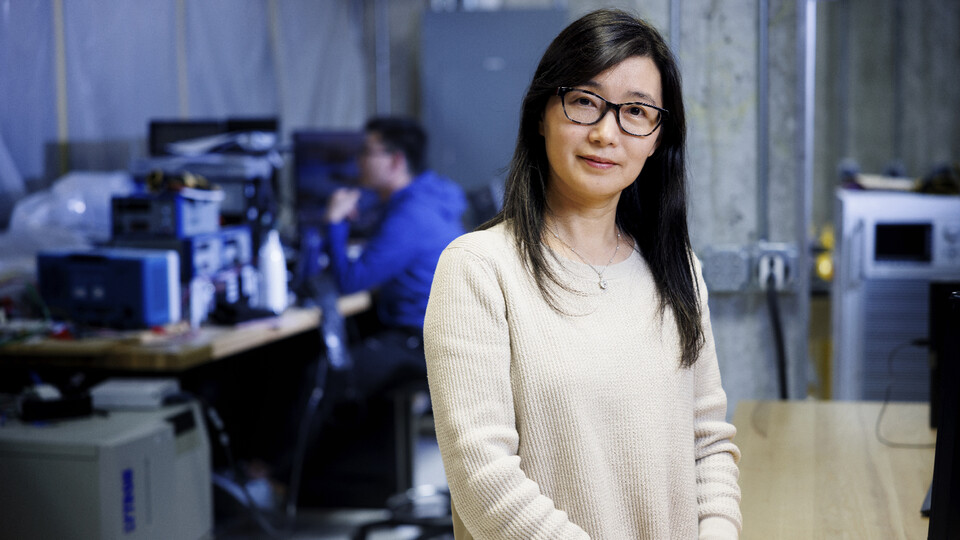
Qu named senior member of National Academy of Inventors
Who: Liyan Qu, associate professor of electrical and computer engineering
What: Qu was elected a senior member of the National Academy of Inventors, a designation for early-stage innovators whose success in patents, licensing and commercialization is positively impacting societal welfare and economic development. She is the first Husker woman to receive this recognition. Qu’s work supports the country’s movement toward electrification and cleaner energy sources by providing software and hardware solutions that increase the efficiency, flexibility and reliability of the electrical supply. Her technologies help integrate renewable energy sources, such as solar and wind power stations, into existing power grid systems. She is a pioneer in developing a novel magnetoelectric transformer that is equipped to handle the variable voltage levels in the power grid system.
“The main goal of my work is to provide cleaner electrical energy to customers with high efficiency, high reliability and at a lower cost,” Qu said. “In addition, if we improve efficiency, that means we can reduce energy-related emissions, which benefits the environment.”
Writer: Tiffany Lee, Office of Research and Economic Development
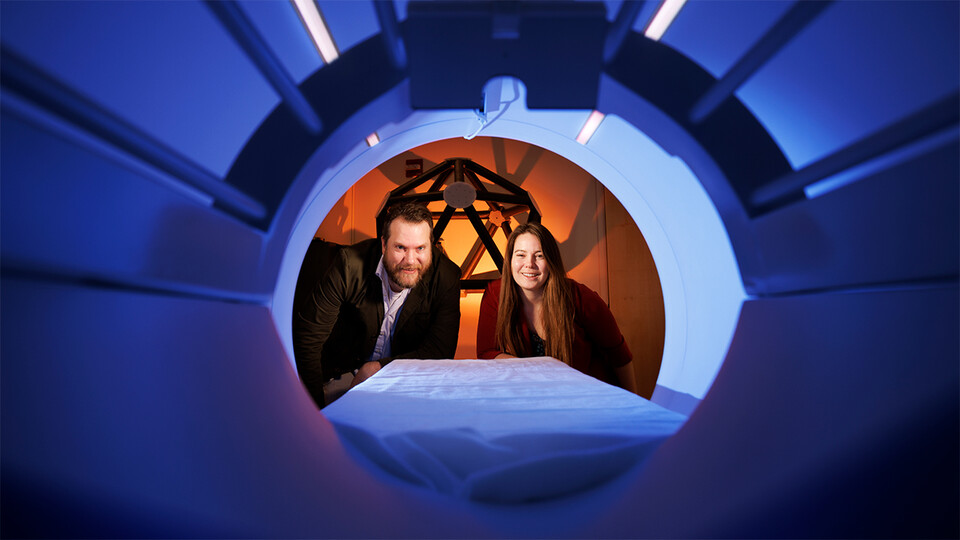
Study finds concussions alter connectivity among brain regions
Who: Doug Schultz, research assistant professor in Nebraska’s Center for Brain, Biology and Behavior; Heather Bouchard, graduate student in psychology; other CB3 researchers
What: To shed light on how mild traumatic brain injury affects brain function, the Nebraska team conducted research comparing brain connectivity before concussion, in the immediate wake of it, and during recovery. Their unexpected results, published in the Journal of Neurotrauma, demonstrated that connections among certain brain regions actually strengthened after a concussion, even as others weakened. The findings could help reveal how brain networks recalibrate their balance of cooperation and specialization in a concussion’s aftermath. A major advantage of this study is that the researchers collected baseline fMRI data from participating student-athletes.
“A lot of sports-related concussion literature really just looks at what’s going on with the brain after somebody gets injured,” Schultz said. “And we do know that, even at baseline, there are differences in the way our brains are organized. So if you don’t have an idea of what those differences are before somebody gets an injury, it’s difficult to disentangle those potential differences from what actually might be caused by the injury.”
Writer: Scott Schrage, University Communication and Marketing
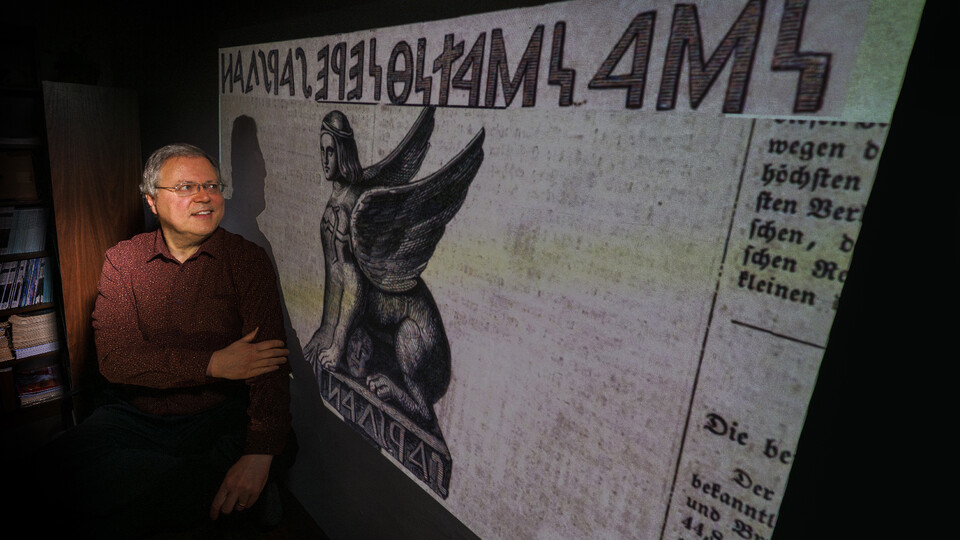
Revesz decodes ancient sphinx’s mysterious message
Who: Peter Revesz, professor of computing
What: For nearly two centuries, scholars have tried to crack the code of a message etched into an unusual bronze sphinx statue believed to have originated in Potaissa, a Roman Empire military base camp located in present-day Romania. Revesz recently solved the mystery, a feat that led to headlines worldwide. Scholars had long struggled to decode the inscription in part because it reads from right to left. Revesz also determined that the characters were rendered as mirror images of alphabetic symbols. Using linguistics databases, Revesz translated the inscription to “Lo, behold, worship! Here is the holy lion!” The work highlights how computational techniques can be used to understand history and language.
“The translation not only satisfies many researchers’ curiosity, who have pondered this artifact over decades, but it contributes to a broader understanding of cultural life in the Roman province of Dacia (where Potaissa was located) in the third century,” he said.
Writer: Leslie Reed, University Communication and Marketing
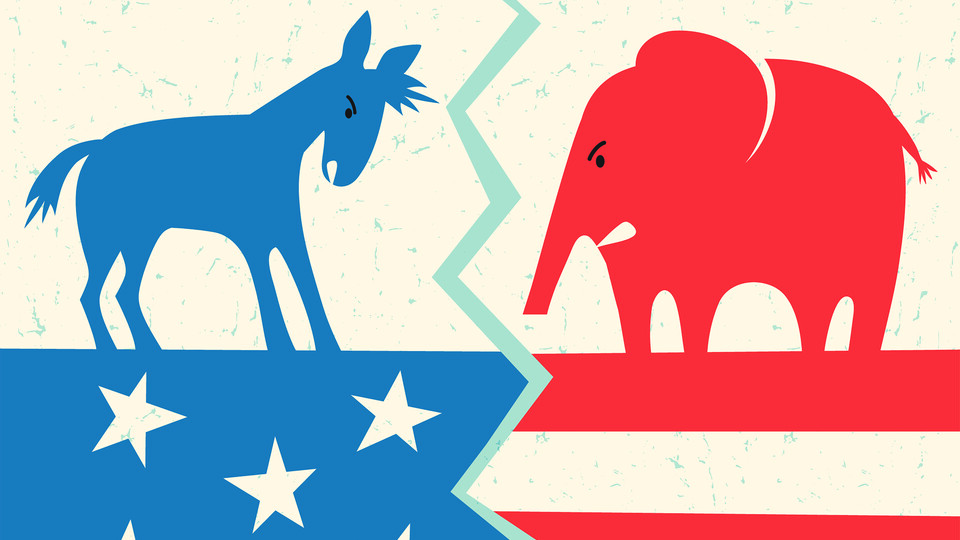
Study shows politics bend moral judgments, tolerance
Who: Kyle Hull, visiting assistant professor in political science; Kevin Smith, Leland J. and Dorothy H. Olson Professor of Political Science; Clarisse Warren, former Ph.D. student in political science
What: In a large survey study, the research team demonstrated the willingness of people to bend their morals, or even behave unethically, when engaging in the political realm. Their findings suggest that hostility toward outgroups – the opposing party – drives this moral ambiguity. This pattern was consistent across ideologies and age groups in the four different samples of adults surveyed. The study highlights the potential harms of outrage politics in an increasingly polarized society.
“I think there’s some reason for concern,” Hull said. “As long as there is some internalized dislike of the outgroup, there’s certainly a risk of behaviors that may be involved when people are willing to act less morally. Politics makes us do things that we just normally wouldn’t do and tolerate things we wouldn’t normally tolerate. It brings out, sometimes, the worst in us.”
Writer: Deann Gayman, University Communication and Marketing
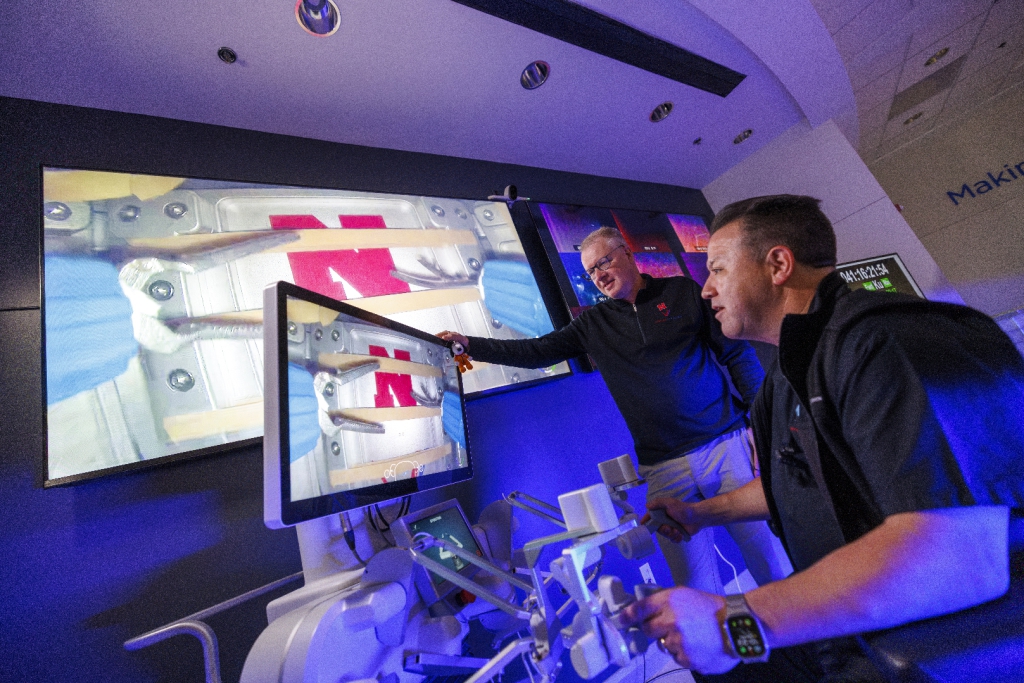
Surgical robot passes space test with flying colors
Who: Shane Farritor, Lederer Professor of Engineering; Virtual Incision
What: In a test that featured half a dozen surgeons from across the U.S., a miniature robot created at the university successfully completed a surgical simulation aboard the International Space Station. MIRA – Miniaturized In Vivo Robotic Assistant – was developed under Farritor’s leadership and is the world’s only small form factor robotic-assisted surgery device. Based on MIRA’s design, the team developed spaceMIRA, which allows pre-programmed and long-distance remote surgery operation modes. The researchers secured funding through the NASA Nebraska Experimental Program to Stimulate Competitive Research to send the robot to the ISS. After the successful test in space, MIRA earned marketing authorization from the U.S. Food and Drug Administration. The approval clears the way for commercial use for adults undergoing colectomy procedures.
“SpaceMIRA’s success at a space station orbiting 250 miles above Earth indicates how useful it can be for health care facilities on the ground,” Farritor said.
Writer: Leslie Reed, University Communication and Marketing
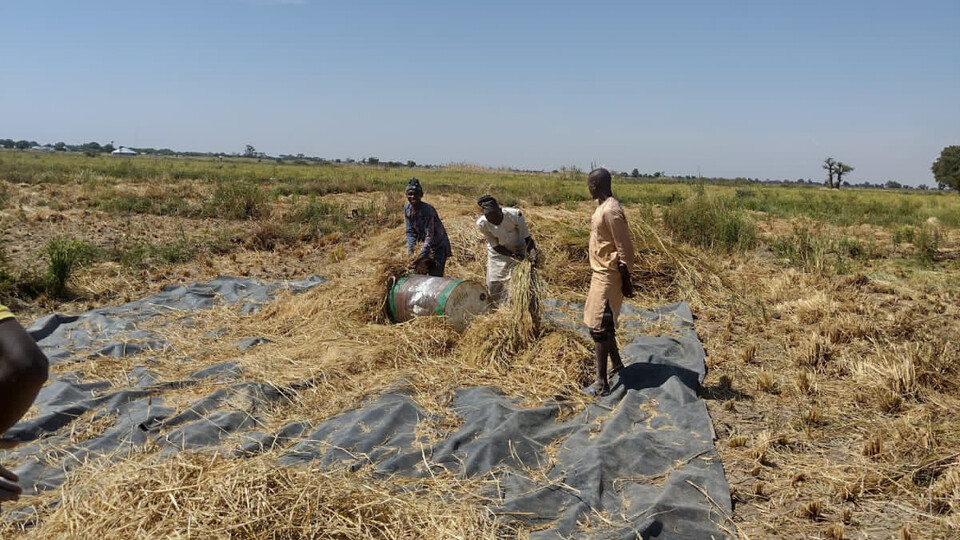
Study points to Africa’s opportunities to boost rice production
Who: Patricio Grassini, professor of agronomy, and a team of international scientists
What: Grassini coordinated a team that published research in Nature Communications. Using a process-based crop simulation modeling approach combined with extensive on-the-ground data collection, the researchers found that the average yield for Africa’s rice sector is less than half the yield that could be achieved with improved agronomic practices. These could include improved land development, soil and plant nutrition, weed control and water management, and moderate cropland expansion. Boosting African rice production is important because reliance on imports increases the continent’s vulnerability to external supply and price shocks and food insecurity. The project received support from the Bill and Melinda Gates Foundation through the Consultative Group for International Agricultural Research Excellence in Agronomy 2030.
“Supporting crop improvement, food security and agriculture stability throughout the world is good for Nebraska and will eventually catalyze opportunities for our producers,” said Derek McLean, dean of the Agricultural Research Division.
Writer: Geitner Simmons, Institute of Agriculture and Natural Resources Media
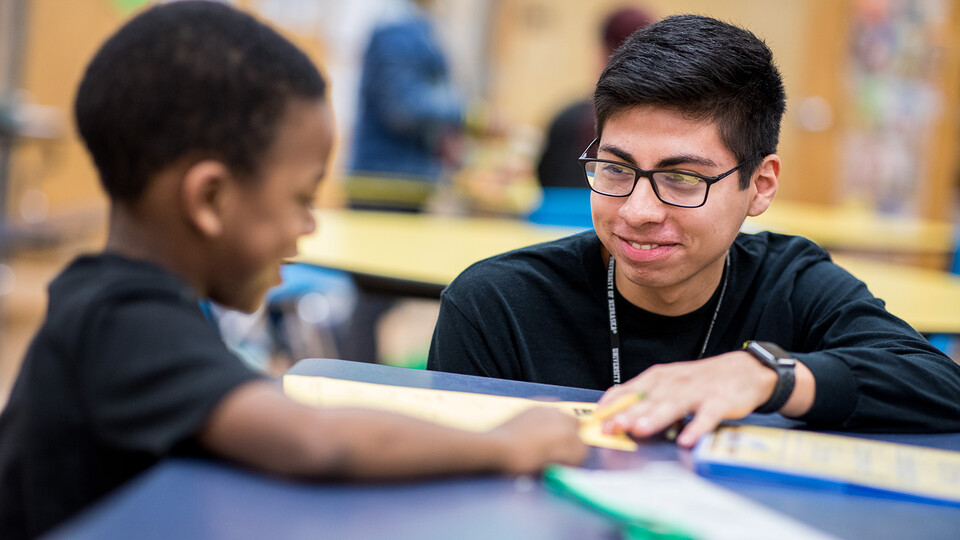
Project to train, support teachers of diverse backgrounds
Who: Amanda Morales and Lauren Gatti, associate professors of teaching, learning and teacher education; Ted Hamann, professor of teaching, learning and teacher education; Socorro Herrera and Melissa Holmes, Kansas State University
What: With funding from the Department of Education, Husker researchers are teaming up with Kansas State University on a project aimed at diversifying and increasing the number of individuals becoming and remaining teachers in Nebraska and Kansas. Project RAÍCES – Re-envisioning Action and Innovation through Community Collaborations for Equity across Systems – will provide 16 full scholarships to students coming to Nebraska’s teacher preparation programs from Youth Participatory Action Research programs at Nebraska high schools. These students will participate in a summer bridge program prior to their fall semester at UNL and engage in a learning community once they’re officially on campus.
“Kids deserve to see someone who looks like them at the front of the classroom,” Gatti said. “What this grant allows us to do is have a small part in helping to create a teaching force more representative of the students in our schools and really being there for them throughout the entire process.”
Writer: Kelcey Buck, College of Education and Human Sciences





